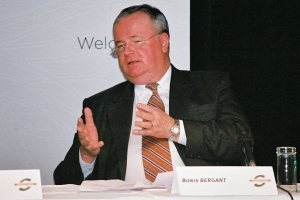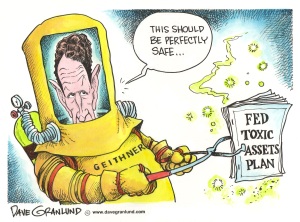
Photos: Boris Bergant chairing the discussion / Erhard Busek opening the session / Zoe Schneeweiss debating. Credit: Matthias Wurz
“It is most frightening to realize that history has not taught us a lesson ,” Boris Bergant uttered the words softly. The Slovenian radio and television journalist, current Vice President of the European Broadcasting Union (EBU), addressed a distinguished audience of media professionals from Central and South-east Europe. His voice seems pressed and slightly nervous, but full of emotions. Before he could continue, however, his remarks were interrupted by enthusiastic applause.
It was Oct. 16, the evening event of the Standards of Evidence symposium, organized by the Commission on Radio and Television Policy for Central, East and South-east Europe alongside with the Forum Alpbach. The scheduled panel discussion on ‘The Media and the Financial Crisis’ with high-profile media professionals held at Vienna’s Haus der Musik, was preceded by a short but not less dignified award ceremony for Boris Bergant. The 61-year-old is recipient of the Dr. Erhard Busek SEEMO 2009 Award for Better Understanding. His short acceptance speech was a moving recollection of the Balkan’s troubled, repetitious and bloody 20th century history.
The SEEMO Award 2009 Ceremony
Austria’s former Vice Chancellor and President of the Forum Alpbach as well as Coordinator of the Southeast European Cooperative Initiative (SECI), Erhard Busek, was not only but also the benefactor of one of Europe’s most prestigious media awards but also host of tonight’s award ceremony. Just a few introductory words were needed for one of the finest and eloquent journalists the Balkan region has. “You have to earn your award,” Busek amicably addressed the delightful award recipient when he referred to the following debate that Bergant would chair.



